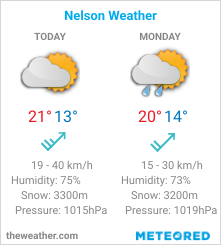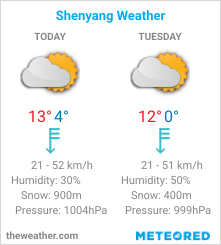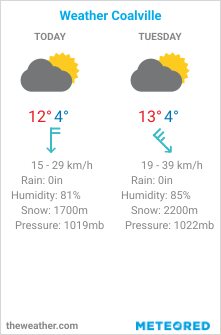
RNZN Fairmiles
On 4 April 1941 the British War Cabinet approved a proposal for a striking force of anti-submarine motor-boats, six at Auckland, four at Wellington, and two at Lyttelton. Drawings and specifications of the Fairmile anti-submarine motorboat developed by Fairmile Marine were sent from England and it was agreed that these craft could be built in New Zealand providing the engines, ordnance and some prefabricated components came from England.
The Class B Fairmiles were 112 feet (34 m) long, displaced 85 tons and had a complement of 16. Twin 12-cylinder petrol engines generated 630 hp (470 kW) on each of two shafts for a speed of 20 knots (37 km/h). They were armed with a 2-pdr (40 mm) gun, a 20 mm Oerlikon cannon, twin 0.303 in Vickers GO machine guns, and 12 depth charges, and were fitted with an ASDIC sonar.
The orders were distributed among four Auckland firms. The estimated cost of each vessel was £35,000, making a total of £420,000 for the twelve. Delays occurred in the delivery of prefabricated components, the difficulty in getting supplies of first-class kauri timber and a serious shortage of skilled labour.[1]
The newly formed RNZN commissioned the 12 Class B Fairmiles on 20 December 1943 and assigned pendant numbers Q 400 through to Q 411. The boats were not initially named, and were identified only through their pendant numbers.
HMNZS Fairmile Q400 “Dolphin / Sayandra”– Burned and sunk, Gt Barrier Is. 1980.



Q400 of the Royal New Zealand Navy – Later Sayandra, wooden motor launch
After catching fire when off Green Island, on the west coast of Great Barrier Island on 9 March 1980, the Sayandra was badly damaged before the fire was put out by the crew of a passing yacht. Two launches then towed the Sayandra to Rarohara Bay, Port Fitzroy, and beached her near Quoin Island, where she sank next day. She became at total loss, subjected to vandalism and pilfering. In 1982, the Marine Division, Ministry of Transport, Auckland, took steps to have the partly submerged vessel removed.
Built at Auckland in 1942, the Sayandra was 34m long, 5.5m beam and powered by twin-screw diesel engines. Owned by Mr B.Pirret of Auckland.
The Sayandra was originally the Fairmile anti-submarine patrol launch Q400 of the Royal New Zealand Navy and had been severely damaged twice before, by fire and stranding in the Solomon Islands in 1944, and in February 1947 when struck by the bow of the Picton ferry Tamahine at Queen’s Wharf, Wellington.
Source: “New Zealand Shipwrecks 200 Years of Disasters at Sea” by Lynton Diggle, Edith Diggle and Keith Gordon. 2007.
HMNZS Fairmile Q401 “Mahurangi” – Lost, Cook Islands 1954. No other information.


HMNZS Fairmile Q402 “Ngaroma”; Hauraki Gulf Ferry on Gt Barrier service – Sold Sri Lanka 1992




First Fiji Race – MAY 1956 – Aboard “Ngaroma” as Escort Vessel
“Ngaroma” was an ex-navy fairmile owned by Jim Lawler, at the time the Commodore of the RAYC.
Picnic at Nukulau Island
http://aucklandfiji.co.nz/our-first-race-to-fiji/


HMNZS Fairmiles – Q 403

Fate – ML 403 was sold to R.T.R Williams of Tauranga who converted it into the fishing and ferry boat”Tiare”. By 1952 a victim of poor maintenance it deterioated badly. In 1955 was sailed to Raglan to have its engines and fittings removed. The hull lay empty and abandanded until 1957 when it was beached and rotted away.






This special alloy CW engine remained in 2007, but had been removed by 2011
Pendant | Reassigned (later) | Builder | Delivered | Career | Fate |
|---|---|---|---|---|---|
| Q 400 | Bailey, Auckland | 18 November 1942 | Suffered engine room fire and explosion. | ||
| Q 401 | Bailey, Auckland | 1 April 19432 | |||
| Q 402 | Bailey, Auckland | November 1943 | Renamed MV Ngaroma and used as a Waiheke ferry until 1992, when she went to Sri Lanka.[2] | ||
| Q 403 | Associated Boat Builders, Auckland | 21 October 1942 | The hullThis special alloy CW engine remained in 2007, but had been removed by 2011Lies on Paritata Peninsula in Whaingaroa Harbour.[3] A local historian wrote, “This vessel was used in Tauranga for fishing trips until Gallaghers brought it to Raglan in the 1960s to extract its motor for the area’s first commercial trawler. The hull was purchased by Mr. Kirk who seems to have let it decay in his creek”. | ||
| Q 404 | Associated Boat Builders, Auckland | 1 February 1943 | |||
| Q 405 | Associated Boat Builders, Auckland | May 1943 | Renamed as Marlyn on being decommissioned after WWII and run as ferry service to and from Lyttelton and Wellington (based in Wellington) until the Wahine Storm 1968 when it was damaged beyond economical repair. | ||
| Q 406 | Associated Boat Builders, Auckland | July 1943 | Was privately owned by Owen Woodbridge and named “Motunui”[4] and then used as accommodation at Waitomo.[5] | ||
| Q 407 | Shipbuilders Limited, Auckland | 8 March 1943 | |||
| Q 408 | Shipbuilders Limited, Auckland | 8 August 1943 | |||
| Q 409 | HMNZS Maori (P3570) | Shipbuilders Limited, Auckland | August 1943 | Re-purchased in 1953 and recommissioned as HMNZS Maori (P3570).[6] | Sold in 1963 to become the Auckland–Waiheke ferry Iris Moana. |
| Q 410 | Voss Limited, Auckland | January 1943 | Renamed Sayandra in 1963.[7] | ||
| Q 411 | HMNZS Kahu II (P3571) | Voss Limited, Auckland | 20 December 1943 | Recommissioned from 1947 to 1965 as HMNZS Kahu I (P3571).[6] | Was for sale in 1986, though without propeller shafts.[8] Scrapped in 2023. |

The first Fairmile constructed, ML403 (Q 403), was launched on 29 September 1942 and commissioned on 21 October 1942. Thereafter the completed boats were delivered at short intervals. All the boats were completed and were then recommissioned into the newly formed RNZN on 20 December 1943.
RNZN Fairmiles in the Solomons[edit]
On 14 January 1944, Vice-Admiral William Halsey, Jr., Commander, South Pacific Area (part of the larger Pacific Ocean Areas), informed the New Zealand Naval Board that the “current employment of Japanese submarines and estimates of their future employment indicate immunity from the submarine menace in New Zealand waters”. He proposed that the New Zealand Fairmile motor launches should be employed in the Solomon Islands, relieving American destroyers and patrol vessels for duty elsewhere.[citation needed]
The twelve Fairmiles were refitted for service in tropical waters and formed into the 80th and 81st Motor Launch Flotillas. The 80th Flotilla consisted of MLs 401 to 406 and the 81st Flotilla of MLs 407 to 411. The flotillas were based at Renard Sound in the Russell Islands. The base was named Kahu and for administrative purposes ML400 (Q 400) was commissioned on 1 April 1944 as HMNZS Kahu. During the seventeen months of their service in the Solomons, from March 1944 until June 1945, the twelve Fairmiles logged 380,000 miles (610,000 km) on anti-submarine screen patrols and on escorting ships.[9] They had no encounters with Japanese forces.[10]
RNZN Fairmiles post war[edit]
All the Fairmiles returned to Auckland in July 1945. In 1946-47 all but ML411 (Q 411) were sold to private buyers who used them for passenger and/or cargo service or as pleasure craft. ML411 was sold in 1965. ML409 (Q 409) was repurchased by the navy in 1953 and resold in 1963 to become the Auckland–Waiheke ferry Iris Moana. Two other former Fairmiles were renamed the Ngaroma and the Colville and used as the main ferries between Auckland and Great Barrier Island. They were skippered by Len Sowerby and his son Lester.
HMNZS Fairmile Q400 “Dolphin / Sayandra”– Burned and sunk, Gt Barrier Is. 1980.









No comments:
Post a Comment
How did you like the post, leave a comment. I would appreciate hearing from you all. Best wishes from JC's Naval, Maritime and Military News